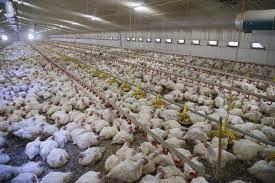 According to the USDA-FAS GAIN report, UK 2021-0084 released October 7th chicken production in the U.K. fell 1.4 percent from market year 2020 to 1.75 million metric tons in 2021. For the upcoming market year beginning October 2021, an additional two percent decline in production is projected. The reason for the successive lower output relates to reduced demand commencing in 2020 following the emergence of COVID and continuing with restrictions in 2021. Currently producers are faced with high feed costs and availability of labor. Although not as critical as in red meat processing, both turkey and broiler producers have experienced difficulty in recruiting U.K. citizens following the departure of temporary workers from Eastern Europe. The U.K. Government has granted short-term visas for 5,500 poultry workers through December 24th, 2021, mainly for turkeys.
According to the USDA-FAS GAIN report, UK 2021-0084 released October 7th chicken production in the U.K. fell 1.4 percent from market year 2020 to 1.75 million metric tons in 2021. For the upcoming market year beginning October 2021, an additional two percent decline in production is projected. The reason for the successive lower output relates to reduced demand commencing in 2020 following the emergence of COVID and continuing with restrictions in 2021. Currently producers are faced with high feed costs and availability of labor. Although not as critical as in red meat processing, both turkey and broiler producers have experienced difficulty in recruiting U.K. citizens following the departure of temporary workers from Eastern Europe. The U.K. Government has granted short-term visas for 5,500 poultry workers through December 24th, 2021, mainly for turkeys.
In 2022, the U.K. will be a net importer of 300,000 metric tons of processed broiler meat. Imports will be up eight percent to 675,000 metric tons and exports will fall 25,000 metric tons to 375,000 metric tons. Consumption by a population of 67 million will attain 66.5 pounds per capita.
 The U.K. poultry industry has yet to recover from the impact of Brexit involving an increase in certification and paperwork and delays at ports of entry into the E.U. The precarious financial state of chicken producers in the U.K. is exemplified by intensive opposition to a bilateral trade deal that would allow U.S. broiler products to be shipped to the U.K. Opposition to an agreement is based on spurious justifications relating to washing or immersing carcasses in chlorine solutions and claimed administration of “hormones” and antibiotics. Essentially onerous regulations that may be included in a trade agreement are directed to protection of producers and not a valid public health consideration.
The U.K. poultry industry has yet to recover from the impact of Brexit involving an increase in certification and paperwork and delays at ports of entry into the E.U. The precarious financial state of chicken producers in the U.K. is exemplified by intensive opposition to a bilateral trade deal that would allow U.S. broiler products to be shipped to the U.K. Opposition to an agreement is based on spurious justifications relating to washing or immersing carcasses in chlorine solutions and claimed administration of “hormones” and antibiotics. Essentially onerous regulations that may be included in a trade agreement are directed to protection of producers and not a valid public health consideration.